Introduction to Fire Sprinkler Estimating
In today’s construction world, precision in cost estimation can mean the difference between project success and financial strain. For fire protection systems—especially fire sprinkler installations—this accuracy is critical. Whether it’s a commercial high-rise, an industrial facility, or a custom-built home, knowing the exact cost of materials, labor, and compliance ahead of time ensures both safety and savings.
That’s where REGAL ESTIMATING comes in.
REGAL ESTIMATING is a leading name in construction estimating services across North America, renowned for delivering accurate, timely, and cost-effective fire sprinkler estimates. Their streamlined approach and in-depth knowledge of building codes, materials, and installation complexities make them a reliable partner in fire protection planning.
This article takes you through their ultimate 7-step fire sprinkler estimating process—a formula designed to improve bidding accuracy, reduce change orders, and maximize profitability. Whether you’re a contractor, project manager, or developer, this guide is your toolkit to success.
Why Accurate Estimation Matters in Fire Sprinkler Protection
Fire sprinkler systems are not one-size-fits-all. Each structure presents unique design challenges and code requirements. A minor error in estimating can lead to costly delays, budget overruns, or worse—noncompliance with life safety regulations.
Key Risks of Inaccurate Fire Sprinkler Estimating:
- Undervalued labor hours
- Omitted materials or fittings
- Misjudged permit or code compliance costs
- Project delays due to underbidding
- Reputational damage with clients or municipalities
By investing in accurate fire sprinkler estimating services, construction professionals can proactively avoid these setbacks and instead focus on delivering code-compliant systems safely and profitably.
Overview of REGAL ESTIMATING’s Approach
At REGAL ESTIMATING, accuracy is more than a buzzword—it’s a standard. Their team of seasoned estimators follows a proven, technology-driven, and standards-based workflow that reflects real-world field conditions and modern construction demands.
Technology-Driven Processes
REGAL ESTIMATING utilizes the latest in:
- 2D & 3D takeoff software
- BIM integration tools
- Cloud-based collaboration platforms
- Cost databases linked to real-time material pricing
Industry-Specific Experience
With over a decade of industry expertise, REGAL ESTIMATING specializes in:
- Commercial fire protection projects
- Multi-residential developments
- Industrial systems with complex piping networks
- Retrofits for existing structures
This depth of experience translates into detailed, code-compliant, and budget-friendly estimates, backed by practical knowledge.
Step 1: Analyzing Project Scope
The first step in accurate estimating is understanding the full scope of work. Every fire sprinkler system begins with a detailed review of project documents, including blueprints, architectural layouts, and specifications.
Reviewing Blueprints and CAD Files
REGAL ESTIMATING team begins by examining:
- Fire protection floor plans
- Riser diagrams and hydraulic calculations
- Architectural sections and ceiling heights
- Reflected ceiling plans (RCPs)
They ensure the system design matches the intended building layout and occupancy classification, minimizing guesswork.
Identifying Project Type and Size
Scope also depends on:
- Building type: commercial, residential, mixed-use
- System type: wet, dry, pre-action, deluge
- Installation area: new build, tenant improvement, retrofit
Each factor influences material selection, labor effort, and compliance considerations—so it’s essential to get it right from the start.
Step 2: Material Takeoff and Costing
A detailed material takeoff (MTO) is the foundation of every fire sprinkler estimate. REGAL’s estimators break down the system component by component to ensure no item is overlooked.
Common Fire Sprinkler Materials:
- Pipes (CPVC, black steel, galvanized, copper)
- Fittings (tees, elbows, reducers)
- Sprinkler heads (standard, quick-response, concealed)
- Hangers and bracing
- Valves (OS&Y, check, pressure-reducing)
- Alarm and flow switches
Pricing and Sourcing Strategies
REGAL ESTIMATING taps into:
- Updated pricing databases (e.g., RSMeans)
- Vendor partnerships for bulk pricing
- Regional cost adjustments to reflect real market rates
Their transparent costing model ensures contractors receive realistic and competitive material budgets, not ballpark figures.
Step 3: Labor Cost Calculations
Labor is one of the most variable and error-prone aspects of estimating. That’s why REGAL ESTIMATING relies on a line-item labor analysis, considering everything from system type to site complexity.
Union vs Non-Union Labor Considerations
Labor rates differ significantly between:
- Unionized trades in metropolitan areas
- Non-union contractors in suburban/rural zones
REGAL ESTIMATING accounts for the local labor environment, adjusting crew sizes, hourly rates, and timelines accordingly.
Regional Labor Rate Adjustments
By referencing tools like:
- US Bureau of Labor Statistics
- National Construction Estimator
- Client-specific rates
REGAL ESTIMATING provides location-specific labor budgets, which are key for multi-state or nationwide contractors.
Step 4: Code Compliance and Safety Standards
Fire sprinkler systems aren’t just about suppressing fires—they’re about adhering to strict legal and safety codes. REGAL ESTIMATING ensures all projects meet or exceed national and local fire protection requirements.
NFPA Standards Overview
The National Fire Protection Association (NFPA) sets the gold standard for sprinkler design and installation, particularly:
- NFPA 13 – Standard for the Installation of Sprinkler Systems
- NFPA 25 – Standard for Inspection, Testing, and Maintenance
- NFPA 72 – Fire Alarm and Signaling Code
REGAL ESTIMATING estimators cross-reference every estimate with relevant NFPA guidelines, ensuring the system design is compliant and inspection-ready.
Local Jurisdiction Requirements
In addition to federal standards, every city or municipality may have unique amendments to code. REGAL ESTIMATING researches:
- Fire marshal requirements
- Permit processes
- Seismic bracing rules
- Water supply tests and flow data
- Backflow prevention needs
By proactively integrating these into the estimate, REGAL ESTIMATING helps clients avoid last-minute code violations and rework costs.
Step 5: Integrating Overhead and Profit Margins
An estimate isn’t just about costs—it’s also about margins. REGAL ESTIMATING strategically includes overhead and profit considerations to ensure contractors are bidding competitively without underpricing.
Typical Overhead Costs in Estimation:
- Office administration
- Insurance and bonding
- Tools and equipment
- Vehicles and fuel
- Project management time
Setting Profitable Margins Without Overpricing
REGAL ESTIMATING applies:
- Industry benchmarks for markups (usually 10–20%)
- Competitor pricing analysis
- Adjustments based on project size and duration
This ensures you win the bid and stay profitable throughout the build process.
Step 6: Finalizing and Reviewing the Estimate
The final estimate undergoes a rigorous QA (Quality Assurance) review to verify completeness, accuracy, and competitiveness.
Using Estimating Software Tools
REGAL employs professional software such as:
- PlanSwift for digital takeoffs
- Trimble Accubid for pricing automation
- Bluebeam Revu for markups and plan review
These platforms allow fast updates and accurate cross-checks for material quantities, labor costs, and scheduling.
Quality Assurance Best Practices
Before submission, every estimate is:
- Peer-reviewed by a senior estimator
- Cross-checked against similar past projects
- Verified for code, scope, and budget alignment
This reduces errors, omissions, and ensures the final estimate is bid-ready.
Step 7: Submitting Bids and Managing Revisions
With your polished estimate in hand, the final step is to prepare and submit the bid, often under tight deadlines and specific formats.
Bid Formatting and Documentation
REGAL ESTIMATING assists with:
- Scope of work documentation
- Bid breakdown by division
- Alternate pricing and value engineering options
- Unit rate schedules
This allows your bid package to stand out professionally, giving you a competitive edge.
Handling Change Orders Effectively
Project conditions often evolve. REGAL supports:
- Revisions after design changes
- Value engineering proposals
- Added scope adjustments
Their ability to provide fast, clear, and fair change order pricing minimizes project delays and disputes.
Fire Sprinkler Estimating Software tools
Here are several top Fire Sprinkler Estimating software tools, each with links and a one-line summary:
Countfire
Cloud-based takeoff automation that quickly counts sprinkler symbols and calculates coverage areas for fast, accurate estimates.
→ Website: https://www.countfire.com/ Groundplan+7CountFire+7CountFire+7CountFire
FireMate 451
Web-based platform offering dynamic, database-driven estimates with customizable pricing and assemblies.
→ Website: https://www.firemate451.com/ Groundplan+3Firemate 451+3STACK Construction Technologies+3
STACK (Fire Sprinkler Module)
Cloud takeoff and estimating platform using automation and templates tailored for sprinkler and fire‑prevention systems.
→ Website: https://www.stackct.com/sprinkler-fire-prevention-system-takeoff-estimating-construction-software/ CountFire+2STACK Construction Technologies+2CountFire+2
PataBid Quantify
AI-enhanced MEP estimating tool with auto counting for sprinkler heads and fittings, plus integrated labor and pricing control.
→ Website: https://www.patabid.com/ (Quantify) Beam AI+8PataBid+8YouTube+8
AutoSPRINK
3D-focused fire sprinkler design and estimating application, ideal for coordination and detailed system layout.
→ Website: https://autosprink.com/ Groundplan+7AutoSPRINK+7STACK Construction Technologies+7
Groundplan (Fire Module)
Cloud-based takeoff tool with intelligent symbol counting, coverage checking, exported bills of quantities, and project scheduling.
→ Website: https://groundplan.com/estimating-software/fire YouTube+8Groundplan+8BuildOps+8
Summary Comparison
| Software | Key Strengths |
|---|---|
| Countfire | Automated symbol counting, coverage/radius tools, PDF revision checks |
| FireMate 451 | Database assemblies, dynamic pricing, cloud access |
| STACK | Templates for sprinkler systems, collaboration, cost/proposal at scale |
| PataBid Quantify | AI-based Rapid Count, labor/material integration, public tenders access |
| AutoSPRINK | 3D design focus, detailed layout coordination |
| Groundplan | Symbol recognition, customizable templates, Excel export, scheduling tools |
Real-World Examples from REGAL ESTIMATING Projects
Commercial Project Case Study
A high-rise office tower in downtown Toronto required a full wet system with 500+ heads across 20 floors. REGAL ESTIMATING provided:
- Full takeoff and labor estimate in 48 hours
- Integration with the client’s BIM model
- Code-compliant documentation for city permits
Result: The client won the bid and completed installation under budget.
Residential Project Case Study
A 30-unit apartment complex in California needed quick turnaround during the pre-construction phase. REGAL delivered:
- Pre-con estimates aligned with NFPA 13R
- Real-time material price updates
- Accurate cost forecasting across phases
Outcome: The developer secured funding approval with confidence.
Benefits of Outsourcing to REGAL ESTIMATING
Time-Saving Advantages
By handling the entire estimating process, REGAL frees up internal teams to:
- Focus on project management
- Win more bids
- Avoid burnout during peak season
Reduced Risk of Budget Overruns
REGAL’s estimates are known for less than 2% deviation from actual project costs. That means fewer surprises and more predictable cash flow.
Common Mistakes in Fire Sprinkler Estimating
Underestimating Labor Complexity
Some estimators assume ideal site conditions. REGAL adjusts for:
- Occupied renovations
- Tight ceiling spaces
- Hazardous environments
Ignoring Code Updates
Many fail to factor in updated versions of NFPA codes or local ordinances, leading to compliance risks. REGAL always works off the latest editions.
Tools and Software Used by REGAL ESTIMATING
| Tool | Purpose |
|---|---|
| PlanSwift | 2D takeoff automation |
| Trimble Accubid | Labor/material pricing |
| Bluebeam Revu | Plan markup and editing |
| AutoCAD/BIM 360 | Integrated design workflows |
| RSMeans | Real-time cost data |
These tools, combined with expert human analysis, make REGAL a top-tier estimating partner.
FAQs About Fire Sprinkler Estimating
How long does it take to receive a fire sprinkler estimate?
Most estimates are delivered within 24 to 72 hours, depending on project complexity.
Can REGAL ESTIMATING handle both new construction and retrofit projects?
Yes. They are experienced with all types of projects, including commercial, residential, industrial, and retrofits.
Is it worth outsourcing fire sprinkler estimating?
Absolutely. Outsourcing saves time, reduces internal costs, and boosts bidding accuracy—leading to more project wins.
Are REGAL ESTIMATING estimates code-compliant?
Yes. All estimates align with NFPA standards and local codes, ensuring a smooth permitting process.
What if there are changes during the construction phase?
REGAL ESTIMATING can quickly revise estimates for change orders, design updates, or added scope.
How does REGAL ESTIMATING maintain accuracy?
They use advanced software, industry experience, and peer-review processes to maintain high accuracy and reliability.
Conclusion
Estimating fire sprinkler systems is no longer a guessing game. With the right expertise, tools, and processes, it becomes a predictable, profitable, and streamlined task. REGAL ESTIMATING 7-step approach ensures you receive:
- Detailed material and labor breakdowns
- Code-compliant, competitive pricing
- Fast, professional bid-ready documents
If you’re ready to elevate your estimating game and win more profitable bids, REGAL ESTIMATING is your go-to solution.
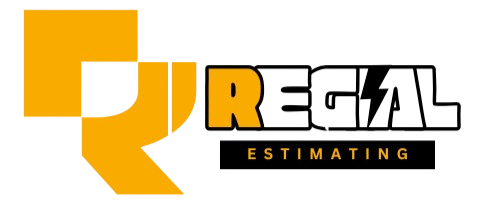
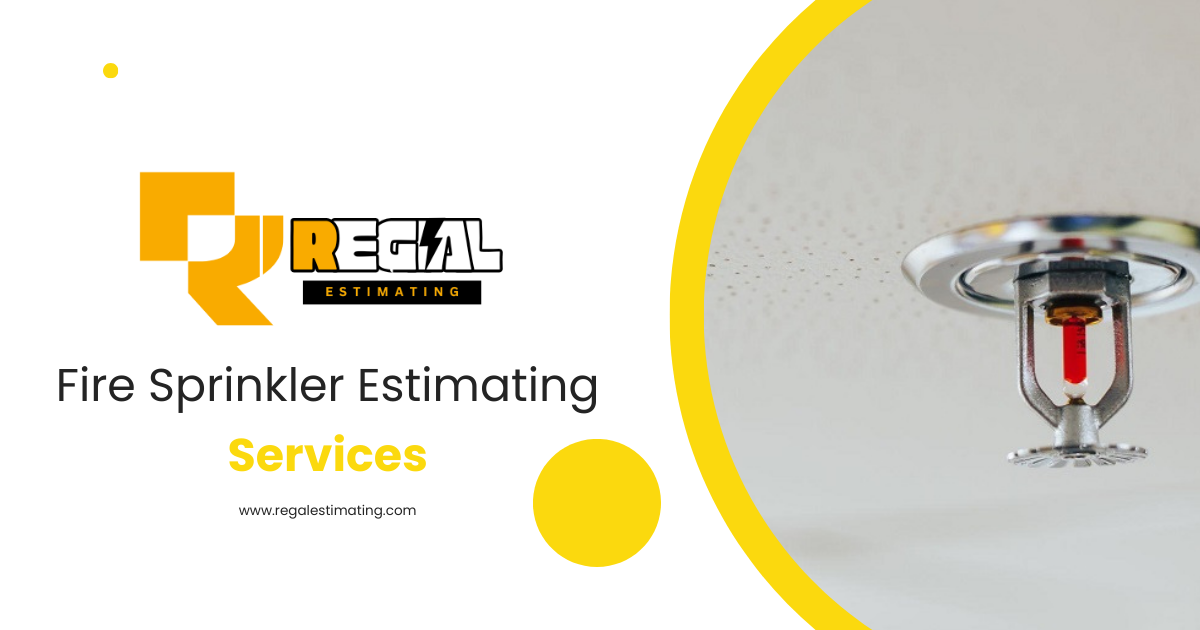
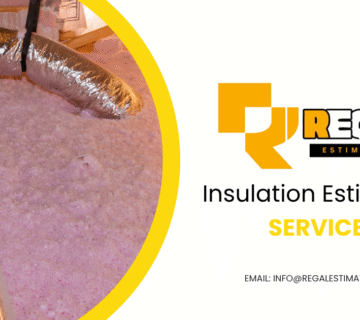
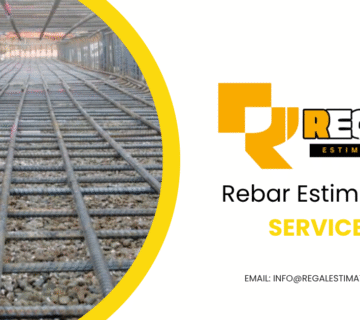
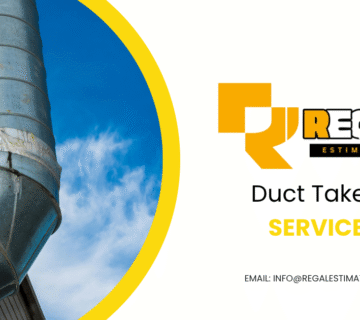
No comment